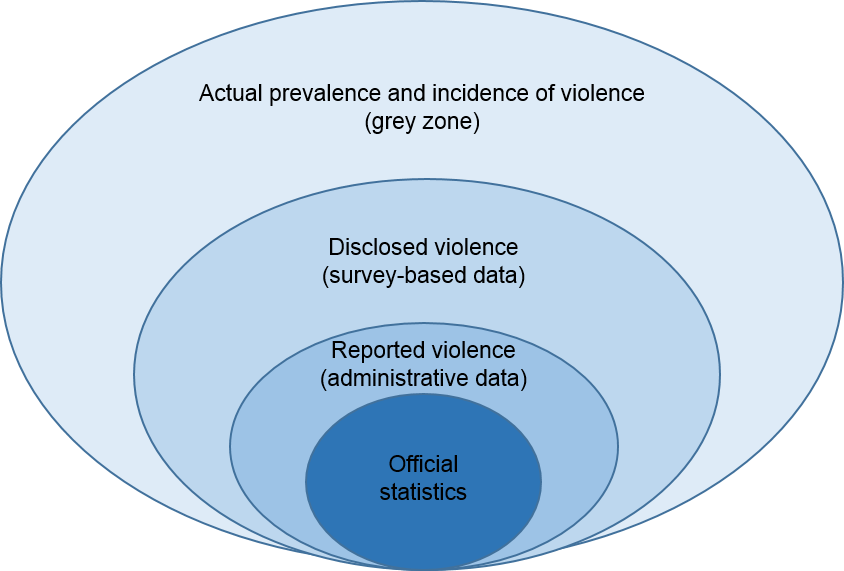EIGE plays a leading role in providing information and research on administrative data collection on violence against women across the European Union. It also helps Member States to improve their data collection in this area and meet international legal obligations. EIGE has carried out four studies on the subject :
- The first study (2014): Mapping the current status and potential of administrative data sources on gender-based violence in the EU
- The second study (2016): Terminology and indicators for data collection on rape, femicide and intimate partner violence: EU-wide terminology and indicators
- The third study (2017-2018): Improving police and justice data on intimate partner violence against women in the European Union
- The fourth study (2019-2020): Advancing administrative data collection on Intimate partner violence and gender-related killings of women
- The fifth study (2022-2023): Methodological Guidance: Administrative data collection on violence against women and domestic violence
In order to inform policy makers and assist the design and implementation of effective policies to combat gender-based violence, it is first necessary to understand the nature and prevalence of the phenomenon. We therefore urgently need comparable data on gender-based violence in all of the 28 EU Member States.
The need for better collection of data related to violence against women has been recognised by the EU, the Council of Europe and, at international level, by the United Nations in their commitment to eradicate violence against women. The European Parliament resolution on the elimination of violence against women (26 November 2009), the Council of the EU’s conclusions on the eradication of violence against women (8 March 2010), as well as the Council conclusions on Combating Violence Against Women, and the Provision of Support Services for Victims of Domestic Violence (6 December 2012) highlight the lack of available and comparable data in this area in the EU.
Data on violence against women can be obtained from different sources, including via sample surveys (as the closest proxy to real prevalence or incident rates), or from administrative institutions dealing with reported cases of violence against women (such as the police, justice, or health and social services).
Official statistics are usually compiled and produced by National Statistical Offices and are based on data from surveys and/or administrative sources. However, these capture only a fraction of the actual prevalence and incidence of violence against women.
The difference between actual prevalence and incidence of violence on one hand, and disclosed violence recorded by sample surveys on the other can be known as the ‘grey zone’, as illustrated below.

Despite its inability to capture the full prevalence of violence, administrative data is important for assessing how public services respond to the needs of women who have experienced violence, and to monitor trends over time.